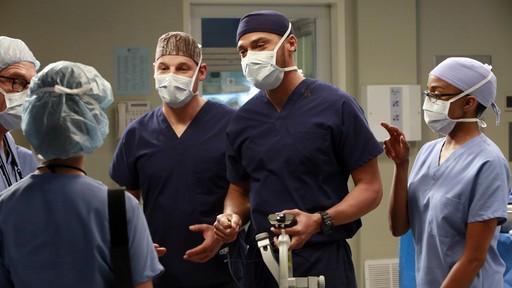
A Transgender Teen's Journey
A Brand Ambassador?!
What are they doing to our beloved Seattle Grace Mercy West Hospital? First, they shut down our ER; then, they installed electronic eyeballs; then they started to streamline everything from procedures down to where they store the toilet paper; and now we need our people's faces to bring in patients, or as THEY say, "clients"? What is happening? And who is going to stop it? And how?!
All good questions. And as they wait until solutions are revealed and things return to a semblance of normal, our doctors must continue to do the amazing work they can… Like help Brian Weston finally look how he feels.
Before surgery, Brian most likely underwent a social transition first.
The social transition involves taking the step to start being referred to as the opposite sex. Many transgender kids describe feeling "not right" in their bodies at a very early age, therefore they, hopefully with the support of their families, will make the decision to start having these important conversations. Many kids want to change their name (such as going from Brianna to Brian), ask people to use different pronouns, and adjust their wardrobe. They possibly will coordinate with the school to inform them of the change in order to address specific issues – for example, can they start to use the other bathroom?
Many kids and their families work with a counselor as well as attend a Transgender Clinic during this time. These clinics, starting to be more frequent at hospitals now, have physicians, case managers, and support groups that provide vital resources to those in need. Not only can they meet other kids in similar situations, but they can also be evaluated for endocrine therapy and potential surgery in the future.
In Brian's case (female to male), endocrine therapy consisted of taking the hormone testosterone.
Testosterone, usually given via injections into the hip or through a patch, causes a variety of changes. These include:
• Menstruation should stop approximately after six months.
• The voice will deepen and may even go through a "cracking" phase.
• Facial and body hair will grow in male patterns.
• Body fat will be redistributed in a more masculine pattern – for example, fat may collect more in the abdominal area.
Now Brian's girlfriend Jess (who is an example of a male to female case) would have taken the hormone estrogen. Administration of estrogen induces changes as well, which include:
• The skin will soften.
• Body fat will be redistributed to the hips and thighs.
• Breasts will develop.
• The development of hair growth and voice deepening will be suppressed.
Experts have not agreed on an ideal age for starting hormone therapy, but many kids begin around the ages of 12-14 because puberty may be a difficult time period for them, especially if their body is biologically changing to a gender with which they struggle to identify. Some doctors recommend a step before hormone therapy called pubertal suppression in order to give the kid more time to make the decision and be evaluated for hormone therapy. Regardless of the specific procedure followed, these types of therapies should only be used when supervised by a medical professional.
After completing these steps, Brian could then proceed to having surgery.
In this particular episode, Brian undergoes chest masculinization surgery. Medically known as a subcutaneous mastectomy, the procedure reduces the patient's breast volume in order to give them a more male-appearing chest. The surgeon removes most of the breast tissue, excess skin, and the inframammary fold. Sometimes the nipple and areola may be left intact, but often doctors will reduce and reposition them to achieve a more male likeness. A plastic surgeon performs the operation under general anesthesia, and it typically lasts 90 to 120 minutes. To achieve the most optimal results, doctors recommend upper body training before and after the surgery.
Even though we did not explore them here, Brian may decide to pursue additional surgical treatments for gender reassignment such as genital reconstruction.
And what procedures are available for male-to-female transition?
Jess would most likely first look into breast augmentation surgery – breast implants can be inserted into the chest in order to provide a more feminine breast contour. She also may consider facial feminization surgery in which a plastic surgeon may transform the features of the chin, hairline, brow and nose. Lastly, genital reconstruction would also be an option.



